The walls of Milan’s famous Castello Sforzesco, named after the Sforza family that commissioned it in the 15th century, holds a secret treasure overlooked by many tourists: the last (and unfinished) sculpture of Renaissance master Michelangelo Buonarotti.
Over the course of his illustrious career, Michelangelo created several versions of the pietà, an adult Christ with a mourning Virgin Mary, the most famous of which is housed inside of St. Peter’s Basilica in Rome. One of them, however, he began in 1550 and adjusted so many times, his style changing toward the end of his life, that it was yet unfinished upon his death in 1564. It was found in his workshop in Rome, the rough figures barely identifiable as Jesus and Mary.
History lost track of the statue until it appeared in the Rondinini Palace in 1807. Over the next 130 years the palazzo (and the sculpture) had a variety of different owners, ending with Vimercati Sanseverino who sold the palazzo do the National Bank for Agriculture in 1946.
At the same time, Sanseverino attempted to put Michelangelo’s final Pietà up for sale on the open market. Two offers were received from the United States of America, one in 1949 from the National Gallery of Art in Washington and another in 1950 from a group of U.S. Catholics who wished to give it to Pope Pius VII as a gift during Jubilee. Both offers were voided, however, when the statue was determined to be a “registered artwork” and thus banned from leaving Italy. This limitation dropped the value of the sculpture from 250 million lira to 135 million lira, after which the auction house decided to give an exclusive purchase option to the Superintendence of Milan. This option, however, would expire on June 30, 1952.
The director of the Brera Art Gallery at the time, Fernanda Wittgens, took it upon herself to make sure that the Pietà ended up in Milan. She began petitioning Milan’s wealthy elite as well as it’s corporate sector, but despite a generous donation from the Italian Commercial Bank, they weren’t able to reach the necessary 135 million lira.
Wittgens enlisted the help of the Mayor of Milan, Virginio Ferrari, who began a public subscription asking for the citizens help in raising funds. He then went forward and exercised the purchase option, even though they were still short 50 million lira.
Fernanda Wittgens hit the pavement again, knocking on the doors of everyone she could think of and getting more donations from not only Milan’s upper class but also from organized groups of factory workers and laborers. In the end, they were successful, and on November 1, 1952 the Rondinini Pietà arrived in Castello Sforzesco’s Ducal Chapel, where it remained through 1953. It was then moved to Scarlioni Hall where it remained for more than half a century.
In recent years, however, the museum as sought a more suitable location to best display Michelangelo’s final masterpiece. After much discussion, the former Spanish Hospital within Castello Sforzesco was chosen, which has been preserved in its original 16th century decoration.
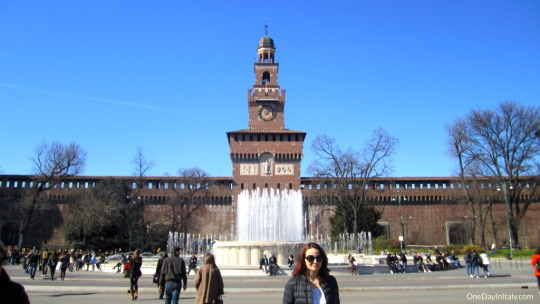
One of the most interesting things to me (and it seems to many) is the relationship between the two figures, which appears to change depending on from what angle you’re viewing it. From some places in the room, Mary is holding a weak Jesus, as is customary in a pietà. From others, though, the fragile body of Jesus actually seems to be supporting his distraught mother.
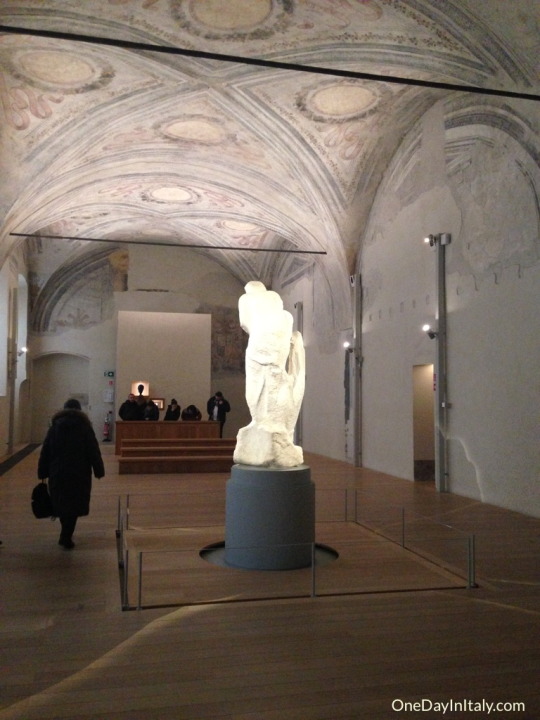
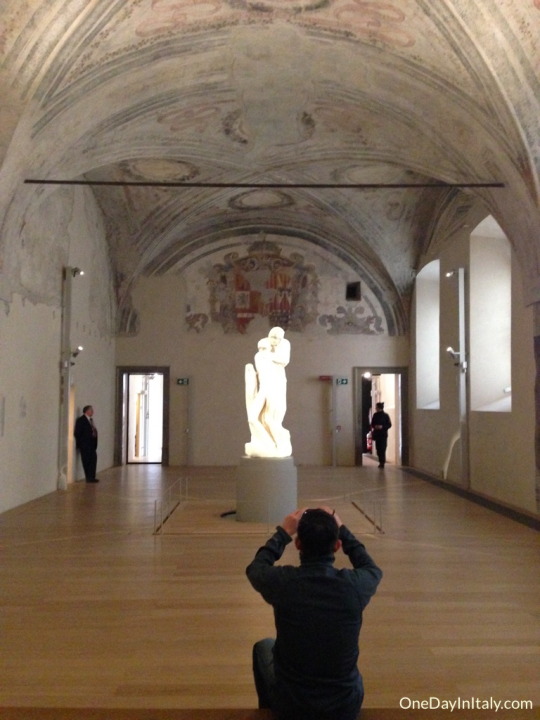

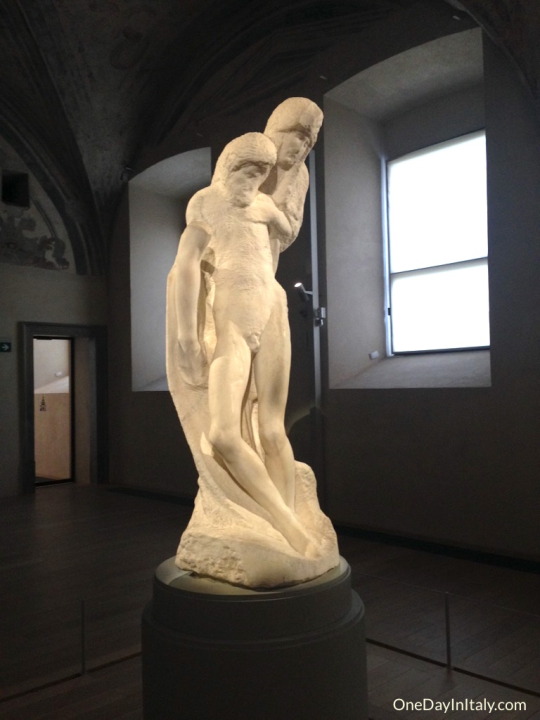
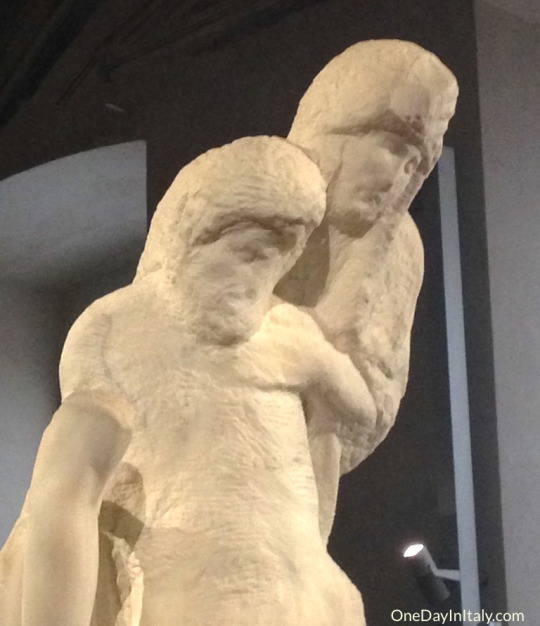
There are separate tickets available to view Michelangelo’s final sculpture that do not include the other museums in Castello Sforzesco, but if you have some time the other buildings are worth a casual walk-through as well. A good thing to be aware of if you’re in Milan on a Tuesday afternoon: from 2pm-5pm, all of the Castello Sforzesco museums offer FREE entrance. In the summer months, I’d expect that also means large crowds, but it might be worth a try!
Comments
comments











Leave a Reply